A mechanised corps was a Soviet armoured formation used prior to the beginning of World War II and reintroduced during the war, in 1942.

The Order of Lenin Leningrad Military District is a military district of the Armed Forces of the Russian Federation. The district was awarded the Order of Lenin in 1968. In 2010, it was merged with the Moscow Military District, the Northern Fleet and the Baltic Fleet to form the new Western Military District. In December 2022, Defense Minister Sergey Shoigu proposed to reestablish it along with the Moscow Military District, a decision confirmed in June 2023 by Deputy Chief of the General Staff Yevgeny Burdinsky. On December 17, 2023, Russian President Vladimir Putin announced plans to recreate the Leningrad Military District as a reaction to Finland joining NATO. The district was formally reconstituted on 26 February 2024 by a Presidential Decree No.141, transferring the Northern Fleet under its command.
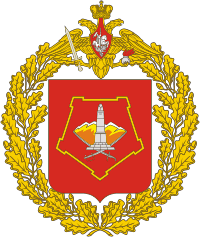
The Volga–Ural Military District was a military district of the Russian Ground Forces, formed on 1 September 2001 by the amalgamation of the Volga Military District and the Ural Military District. The headquarters of the Ural Military District, located at Yekaterinburg became the new headquarters of the merged district. In 2010 the District was merged with part of the Siberian Military District to form the new Central Military District.
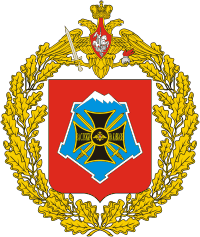
The North Caucasus Military District was a military district of the Russian Armed Forces from 1992-2010. Before 1992 it had been part of the Soviet Armed Forces since 1918. In 2010 it became the Southern Military District and lately also included the Black Sea Fleet and Caspian Flotilla.
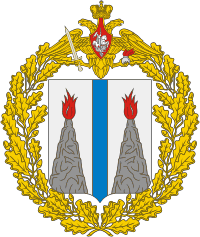
The Far Eastern Military District was a military district of the Armed Forces of the Russian Federation. In 2010 it was merged with the Pacific Fleet and part of the Siberian Military District to form the new Eastern Military District.
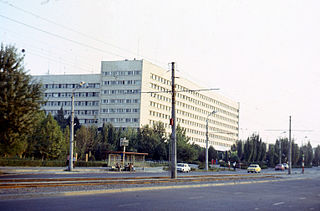
The Turkestan Military District was a military district of both the Imperial Russian Army and the Soviet Armed Forces, with its headquarters at Tashkent. The District was first created during the 1874 Russian military reform when by order of Minister Dmitry Milyutin the territory of Russia was divided into fourteen military districts. Its first commander was Konstantin Petrovich von Kaufmann, who was also Governor-General of Russian Turkestan at the time.

The 40th Army of the Soviet Ground Forces was an army-level command that participated in World War II from 1941 to 1945 and was reformed specifically for the Soviet–Afghan War from 1979 to circa 1990. The Army became the land forces arm of the Soviet occupational force in Afghanistan in the 1980s, the Limited Contingent of Soviet Forces in Afghanistan.
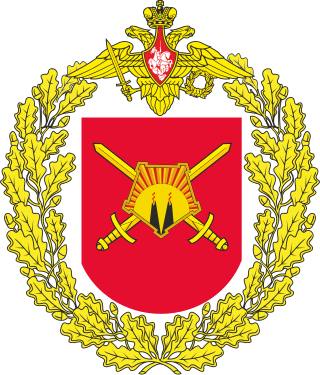
The 39th Separate Guards Red Banner Motor Rifle Brigade is a mechanized infantry brigade in the Russian Ground Forces. Originally formed as the Blagoveshchensk Fortified Region of the Soviet Union's Red Army in 1932, it became the basis for the 2nd formation of the 342nd Rifle Division and took part in the Soviet invasion of Manchuria. During the Cold War, it was reformed as the 56th Motor Rifle Division and later re-designated as the 33rd Separate Motor Rifle Division. In 2009, it was downsized and reorganized into the 39th Separate Motor Rifle Brigade as part of the 2008 Russian military reform.
The 266th Rifle Division was a rifle division of the Soviet Red Army during World War II. The 266th was formed three times during the war.
The 372nd Rifle Red Banner Novgorod Division was a division of the Red Army during the Second World War.
The 86th Rifle Division was an infantry division of the Soviet Union's Red Army during the Interwar period, World War II, and the early postwar period, formed twice.
The 13th Guards Army Corps was a corps of the Soviet Ground Forces, formed from the previous 13th Guards Rifle Corps, which saw service during the Second World War.
The 83rd Rifle Division was an infantry division of the Red Army during World War II.
The 207th Rifle Division began its combat path under unusual circumstances. It was partly formed for the first time as a standard Red Army rifle division in the spring of 1941, before the German invasion, but was never completed. A second formation began in April 1942 and was completed on June 1, after which it was sent to the Stalingrad Front. Heavily depleted in counterattacks against the north flank of German Sixth Army, by November the survivors were reassigned and the division disbanded. The 207th was formed for a third time in June 1943, and fought its way through the central part of the Soviet-German front, ending the war in the heart of Berlin in the battle for the Reichstag. The division saw postwar service in the Group of Soviet Forces in Germany.
The 62nd Rifle Division was an infantry division of the Soviet Union's Red Army, formed four times and active during World War II and the postwar period. The division was formed in 1936 and fought in the Winter War and Soviet occupation of Bessarabia and Northern Bukovina. It was destroyed during the Battle of Kiev in summer 1941. The division was reformed in November 1941. It fought in the defense against the German offensive Case Blue during the summer of 1942. After suffering heavy losses, it was withdrawn from combat but was sent back to fight in the Battle of Stalingrad in November. The division suffered heavy losses and was disbanded on 2 November. The division was reformed a third time from a rifle brigade in April 1943. It fought in Operation Suvorov, Operation Bagration, the East Prussian Offensive and the Prague Offensive. It was disbanded in the summer of 1945. The 62nd was reformed a fourth time by renaming the 360th Rifle Division, but became the 108th Motor Rifle Division in 1957.
The 22nd Guards Tank Division was a tank division of the Soviet Army. The division traced its lineage back to the World War II 7th Guards Airborne Division, which became the 115th Guards Rifle Division after the end of the war. In 1957, the 115th became the 22nd Guards Tank Division. The division was based in the small military town of Novoye, which was quickly renamed Cherkaske after the Cherkassy honorific title of the division. From May 1957, it was part of the 6th Guards Tank Army, relocated from the Transbaikal. The division's 223rd Tank Regiment was transferred from the 16th Tank Division of the 6th Guards Tank Army, formerly stationed in Mongolia. The division was maintained as a high strength cadre division, not ready for combat. It was disbanded in 1990 to make room for the 93rd Guards Motor Rifle Division, which had been withdrawn from Hungary.
The 295th Rifle Division was an infantry division of the Soviet Union's Red Army and later the Soviet Army, formed twice.
The 69th Covering Brigade is a unique border protection brigade of the Russian Ground Forces, stationed at Babstovo, Jewish Autonomous Oblast, and part of the 35th Army. Military Unit в/ч 61424.
The 17th Rifle Corps was a corps of the Red Army and later the Soviet Army, formed three times.
The 376th Rifle Division was raised in 1941 as an infantry division of the Red Army, and served for the duration of the Great Patriotic War in that role. It began forming in August 1941 in the Siberian Military District. It followed a very similar combat path to that of the 374th Rifle Division. It joined the fighting front in December with the new 59th Army along the Volkhov River and it continued to serve in the battles near Leningrad until early 1944. The division took horrendous casualties in the combat to create and hold open a passage to the 2nd Shock Army during the Lyuban Offensive and was itself partly or fully encircled at several times during this dismal fighting. The division finally left this region as it advanced during the Leningrad–Novgorod Offensive in January 1944 and in July won a battle honor in the liberation of Pskov, while its 1250th Rifle Regiment was awarded the Order of the Red Banner. In October the 376th as a whole would also receive the Red Banner for its part in the liberation of Riga. The division ended the war in Latvia, helping to contain and reduce the German forces trapped in the Courland Pocket, and was reorganized as a rifle brigade shortly thereafter.







